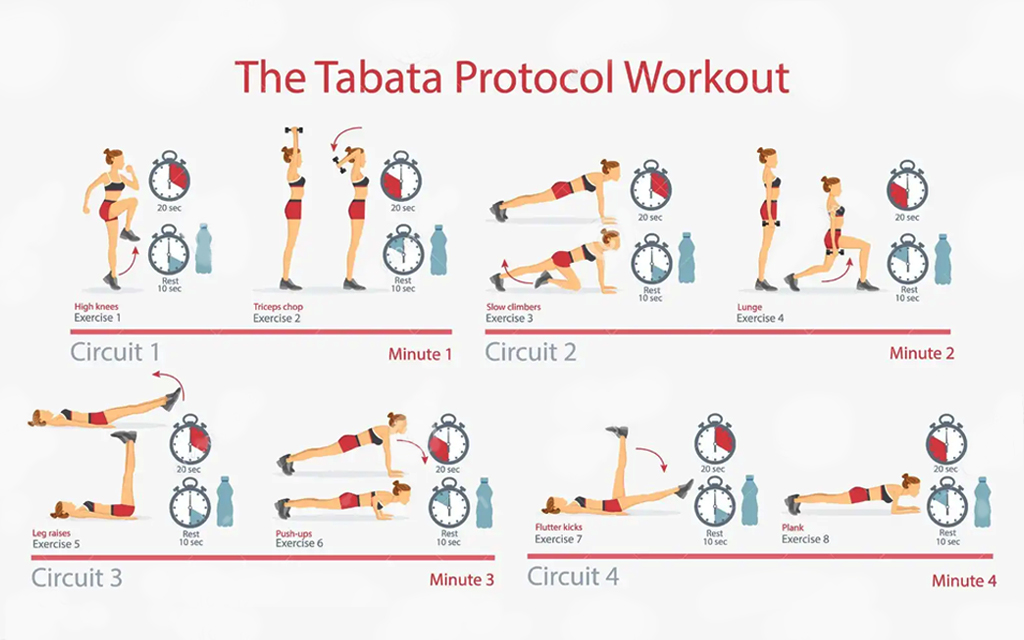Have you ever wondered what sets apart the marathon runner from the sprinter? Or what separates an athlete who can handle long and grueling workouts from one who can only manage short and explosive ones?
The secret lies in stamina and endurance, two physical attributes that may seem similar but couldn’t be more different. Understanding the distinction between these two terms can elevate your fitness journey and help you reach new heights in your athletic pursuits.
Whether you’re an athlete striving for excellence, a fitness enthusiast seeking to optimize your workouts, or simply curious about the nuances of human performance, this article will equip you with a comprehensive understanding of stamina and endurance. By unraveling their definitions, characteristics, and training methodologies, we aim to empower you to unlock your full potential in any physical endeavor.
So, let’s dive into the debate of stamina vs. endurance and unpack the key differences between the two. Are you ready to step up your game? Let’s get started!
What is Stamina?
Have you ever been amazed by someone’s endurance during a marathon or a rigorous workout session?
Well, that taps into the concept of stamina – the ability to sustain prolonged physical or mental effort. Stamina is different from physical strength as it involves the capacity to maintain effort over an extended period, and it is not limited to specific body parts.
It is a combination of strength and persistence that allows one to push through the finish line without succumbing to fatigue. It is like having a reserve tank of energy that kicks in when the initial source runs out.
Factors Affecting Stamina
So, how does your body build stamina? Here are some listed factors that work in harmony to increase your stamina.
-
Cardiovascular Efficiency
Stamina heavily relies on the cardiovascular system’s ability to deliver oxygen-rich blood to the working muscles efficiently. A robust heart and healthy blood vessels contribute to enhanced oxygen transport, facilitating endurance activities such as long-distance running, cycling, or swimming.
-
Efficient Energy Utilization
Stamina is closely linked to the body’s energy systems, primarily relying on aerobic metabolism. During prolonged activities, the body predominantly utilizes stored carbohydrates and fats to generate a sustained energy supply, allowing individuals to endure physical exertion for extended periods.
-
Muscular Endurance
Muscular endurance is a key component of stamina. It refers to the ability of specific muscle groups to repeatedly contract and generate force without fatigue. Enhanced muscular endurance enables individuals to maintain performance levels, resist muscle fatigue, and sustain effort during activities like weightlifting, rowing, or repetitive motion sports.
-
Mental Resilience
Stamina is not solely a physical attribute but also encompasses mental fortitude. The ability to push through discomfort, maintain focus, and remain motivated during prolonged physical activity is essential for enduring performance. Mental resilience plays a significant role in overcoming fatigue, managing discomfort, and sustaining effort when faced with challenging situations.
Related Article: How Exercise Helps Your Mental Health? 5 Best Mental Health Exercises
-
Recovery Capacity
An important aspect of stamina is the ability to recover quickly from exertion. Efficient recovery processes, such as replenishing energy stores, removing metabolic waste products, and repairing muscle tissue, allow individuals to bounce back rapidly and continue performing at a high level for extended periods.
-
Training Adaptations
Stamina can be improved through systematic training. Regular endurance-based workouts, such as long-distance runs, interval training, or sustained aerobic activities, stimulate physiological adaptations, enhancing cardiovascular efficiency, oxygen uptake, and the body’s capacity to endure prolonged effort.
Training Methods to Improve Stamina
When energy levels are low, exercise might be the last thing on your mind. However, it’s important to note that regular exercise can actually help in building stamina.
According to a study conducted in 2017, participants experiencing work-related fatigue saw significant improvements in their energy levels after engaging in six weeks of exercise intervention. Not only did their stamina increase, but they also experienced enhancements in workability, sleep quality, and cognitive functioning.
Therefore, even when feeling depleted, incorporating regular exercise into your routine can have a positive impact on your overall energy levels and well-being. Here are some training methods that can help you work up your stamina.
1. Aerobic Exercises

Aerobic exercises play a vital role in improving stamina by specifically targeting the cardiovascular system and enhancing its efficiency. Regular engagement in aerobic exercises leads to several physiological adaptations that contribute to increased stamina.
During aerobic activities, such as running, swimming, cycling, or brisk walking, the heart rate and breathing rate elevate, supplying a greater amount of oxygen to the muscles. This sustained demand for oxygen prompts the body to make adaptations, such as an increase in the size and strength of the heart, improved lung capacity, and enhanced oxygen-carrying capacity of the blood.
These adaptations result in the more efficient delivery of oxygen to the working muscles, reducing fatigue and allowing individuals to sustain physical effort for longer periods. Additionally, aerobic exercises promote the utilization of stored fat as an energy source, sparing glycogen stores and improving endurance.
Related Article: Aerobic Exercise And Its Positive Effects On Muscles
2. Interval Training

Interval training is a workout routine that alternates between high-intensity and low-intensity exercises to give your body a fantastic challenge. But did you know that interval training can also improve your stamina? Yes, by pushing your body to the limit during high-intensity intervals, you will strengthen your heart, lungs, and muscles.
And by giving yourself rest periods during the low-intensity intervals, you teach your body to recover quickly, which means you can work harder next time. There are different interval training exercises you can try to boost your stamina, such as Tabata training, sprint intervals, and circuit training.
All of them target different muscle groups and have varying lengths, so you can choose the one that best suits your fitness level and schedule. Whether you are a beginner or an experienced athlete, interval training can help you push through your limits and achieve your fitness goals.
3. Cross-training

Cross-training is a great way to improve your stamina and take your fitness game to the next level. By incorporating a variety of exercises that work for different muscle groups and challenge your cardiovascular system in different ways, you’ll start to see an improvement in your endurance and overall performance.
Some popular cross-training activities to try include swimming, cycling, running, weightlifting, and yoga. By mixing things up and challenging your body in new ways, you’ll build your stamina and prevent boredom. Research also suggests that cross-training can prevent potential injuries.
So if you’re looking to boost your stamina and switch up your workout routine, give cross-training a try. Your body (and mind) will thank you for it.
Related Article: Murph CrossFit Workout To Build Stamina Made Out Of Steel
What is Endurance?
Endurance is one of those characteristics that can mean different things to different people. Some might think of it as the ability to run a marathon without stopping, while others might see it as making it through a difficult work project while staying motivated.
At its core, endurance is about pushing through physical or mental challenges and persevering despite adversity. It’s not just about raw strength but also about mental fortitude and the willingness to keep going even when the going gets tough.
Factors Affecting Endurance
Several factors can affect an individual’s endurance, influencing their ability to sustain prolonged physical exertion and performance. These factors can be categorized into physiological, biomechanical, psychological, and external elements. Here are some of the key factors affecting endurance:
-
Muscular Strength and Endurance
The strength and endurance of the muscles involved in a particular activity play a crucial role in determining endurance. Well-conditioned muscles can perform repetitive contractions and resist fatigue, enabling individuals to sustain effort for longer periods.
-
Energy Utilization and Metabolism
The body’s energy systems and the ability to utilize fuel sources efficiently affect endurance. Adequate energy stores, such as glycogen and fat, along with efficient energy production through aerobic metabolism, are essential for prolonged performance.
-
Mental Toughness and Motivation
Psychological factors, such as mental toughness, determination, focus, and motivation, play a significant role in enduring performance. Developing mental resilience, managing discomfort, and staying motivated during challenging situations can help individuals push through barriers and sustain the effort.
-
Recovery and Adaptation
The body’s ability to recover and adapt to training stimuli is crucial for enhancing endurance. Adequate rest, proper nutrition, and strategic recovery practices support the body’s ability to repair, rebuild, and adapt, ultimately improving endurance capacity.
Training Methods to Improve Endurance
To improve endurance, incorporating specific training methods into your regimen is crucial. These methods are designed to challenge and improve the cardiovascular system, muscular endurance, and overall stamina. Here are some effective endurance training methods:
1. Long-distance Running or Cycling

By constantly pushing your body to endure longer and go further, you are training your cardiovascular system to work more efficiently. It’s like giving your heart and lungs a good workout, which can translate to everyday activities like climbing stairs or carrying groceries.
Additionally, long-distance endurance activities can improve mental toughness and resilience. There’s something about pushing through the discomfort that builds a sense of pride and accomplishment.
So, whether you prefer hitting the pavement or the trails, don’t be afraid to push yourself and reap the benefits of long-distance running or cycling!
2. High-intensity Interval Training (HIIT)

If you’re looking to push your endurance to the next level, look no further than High-intensity Interval Training (HIIT). This workout method involves short bursts of intense activity followed by brief rests, making it an effective way to improve both speed and endurance.
With regular HIIT sessions, you can increase your body’s ability to sustain activity for longer periods of time, making those long runs or bike rides feel like a breeze. Not only does HIIT help build endurance, but it also offers a quick and efficient way to get a full-body workout.
These workouts can be done with the help of dumbbells, kettlebells, jump ropes, medicine balls, or resistance bands.
3. Resistance Training

While traditional cardio workouts like running or cycling can certainly help, resistance training allows you to build muscle strength and endurance simultaneously. By gradually increasing your weight and reps, your muscles adapt to the challenge and become more efficient at using oxygen.
When these muscles are stronger, they are better equipped to handle the demands of sustained physical activity, leading to improved endurance.
Not only will you be able to last longer during a workout, but you’ll also notice improvements in your overall strength and muscle definition. Resistance training can be done with weights or resistance bands.
Differences Between Stamina and Endurance
Understanding the differences between stamina and endurance allows individuals to tailor their training and conditioning programs to specific goals, activities, and performance demands.
By focusing on the unique aspects of each concept, athletes and fitness enthusiasts can optimize their physical capacities and excel in their chosen pursuits.
A. Focus of Each Concept:
Stamina and endurance have slightly different focuses. Stamina primarily refers to the ability to sustain exertion and maintain optimal performance over an extended period. It encompasses the capacity to endure physical and mental challenges without succumbing to fatigue.
On the other hand, endurance encompasses both the ability to withstand prolonged physical exertion and the capacity to endure intense bursts of effort repeatedly. While stamina emphasizes continuous effort, endurance includes the ability to recover quickly and maintain performance in repeated bouts of activity.
B. Time Duration:
In terms of time duration, stamina is often associated with prolonged activities that require sustained effort over an extended period. It relates to the ability to maintain performance over hours or even days, such as long-distance running or cycling events.
Endurance, on the other hand, covers a broader range of time durations. It can refer to both prolonged efforts and shorter but repetitive bursts of intense activity, such as interval training or sports involving repeated sprints or explosive movements.
C. Energy Systems Involved
Stamina and endurance involve different energy systems within the body. Stamina relies primarily on the aerobic energy system, which utilizes oxygen to produce energy over an extended duration. It emphasizes efficient oxygen delivery, energy production from stored carbohydrates and fats, and optimal utilization of energy resources.
Endurance encompasses both aerobic and anaerobic energy systems. While aerobic metabolism still plays a significant role, endurance activities often involve higher-intensity efforts that rely on anaerobic metabolism, utilizing energy sources like stored glycogen and phosphate compounds for quick bursts of power.
D. Applications in Different Sports or Activities
Stamina and endurance find applications in various sports and activities, although their emphasis may differ. Stamina is particularly relevant in endurance-based activities such as long-distance running, cycling, swimming, or triathlons, where the primary goal is to sustain effort over an extended period. It is also crucial in activities like hiking, marathons, or ultra-endurance events.
Endurance, with its focus on both sustained effort and repeated bursts of intensity, finds applications in a wider range of sports and activities. It is essential in team sports like soccer or basketball, where players must maintain performance throughout a game, as well as in interval-based training, high-intensity interval training (HIIT), or explosive sports like sprinting or weightlifting.
Benefits of Increasing Endurance and Stamina
Incorporating activities that enhance endurance and stamina into one’s routine offers numerous benefits for physical health, mental well-being, and overall quality of life. The positive impacts extend beyond athletic performance, making endurance and stamina training a valuable component of a well. Here are some of the benefits of increasing stamina and endurance:
- Enhanced Athletic Performance: Increasing endurance and stamina directly improves athletic performance. Endurance allows athletes to maintain a high level of performance for longer durations, while stamina enables them to sustain effort and push through fatigue. Improved endurance and stamina lead to better endurance-based sports performance, such as running, cycling, or swimming, as well as improved overall athletic capacity.
- Boosted Heart Health: Endurance and stamina training positively impact cardiovascular health. Regular aerobic exercise improves heart function, strengthens the heart muscle, and enhances the efficiency of the cardiovascular system. It lowers resting heart rate, reduces blood pressure, and improves blood flow, reducing the risk of heart diseases, such as heart attacks, strokes, and hypertension.
- Increased Energy Levels: Building endurance and stamina increases energy levels and reduces fatigue. Regular exercise boosts the body’s oxygen-carrying capacity, enhances nutrient delivery, and improves cellular energy production. This results in increased energy reserves, improved vitality, and reduced feelings of tiredness and lethargy.
- Weight Management and Body Composition: Endurance and stamina training contribute to weight management and improved body composition. These exercises burn calories and promote fat utilization as an energy source. Regular engagement in endurance activities, combined with a balanced diet, helps manage body weight, reduce body fat percentage, and improve muscle tone and definition.
- Improved Metabolism: Endurance and stamina training stimulate metabolic adaptations, leading to an increased metabolic rate. This means the body becomes more efficient at burning calories, even at rest. A higher metabolism aids in weight management enhances overall energy expenditure, and promotes overall metabolic health.
Related Article: Healthy Vegetable Combos That Work Wonders For Your Metabolism
- Enhanced Quality of Life: Increasing endurance and stamina has a positive impact on overall well-being and quality of life. Regular exercise releases endorphins, the body’s natural mood-enhancing chemicals, promoting feelings of happiness and reducing stress and anxiety. Improved physical fitness allows individuals to engage in daily activities with ease and enjoy recreational pursuits to the fullest.
- Reduced Risk of Chronic Diseases: Engaging in activities that increase endurance and stamina helps lower the risk of chronic diseases. Regular exercise has been associated with a decreased risk of conditions such as cardiovascular diseases, type 2 diabetes, obesity, certain cancers, and osteoporosis. It also improves insulin sensitivity and blood lipid profiles.
- Better Sleep Patterns: Regular exercise to enhance endurance and stamina can improve sleep patterns and overall sleep quality. Exercise helps regulate the sleep-wake cycle, promotes deep sleep, and reduces the likelihood of insomnia or sleep disturbances. Better sleep supports physical recovery, mental well-being, and overall health.
Conclusion
In conclusion, understanding the differences between stamina and endurance is key to optimizing our physical performance and overall well-being. Stamina refers to the ability to sustain effort over a prolonged period, while endurance encompasses both sustained effort and the capacity to endure intense bursts repeatedly. By developing both stamina and endurance, we can unlock our full potential in various sports and activities.
Embracing the journey of developing endurance and stamina empowers us to lead a more active, vibrant, and fulfilling life. So, let’s lace up our shoes, embark on this exciting path, and reap the countless rewards that come with it.





